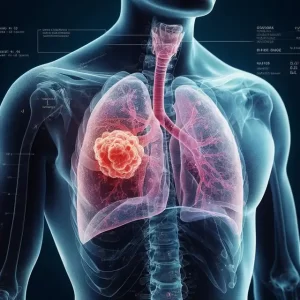New coronavirus carried by bats and spread to humans after a spillover effect
- EPA Announces First-Ever Regulation for “Forever Chemicals” in Drinking Water
- Kochi University pioneers outpatient bladder cancer treatment using semiconductor lasers
- ASPEN 2024: Nutritional Therapy Strategies for Cancer and Critically Ill Patients
- Which lung cancer patients can benefit from neoadjuvant immunotherapy?
- Heme Iron Absorption: Why Meat Matters for Women’s Iron Needs
- “Miracle Weight-loss Drug” Semaglutide Is Not Always Effective
LNew evidence: The new coronavirus carried by bats and spread to humans after a spillover effect
- Red Yeast Rice Scare Grips Japan: Over 114 Hospitalized and 5 Deaths
- Long COVID Brain Fog: Blood-Brain Barrier Damage and Persistent Inflammation
- FDA has mandated a top-level black box warning for all marketed CAR-T therapies
- Can people with high blood pressure eat peanuts?
- What is the difference between dopamine and dobutamine?
- How long can the patient live after heart stent surgery?
New evidence: The new coronavirus carried by bats and spread to humans after a spillover effect.
According to the French Le Monde, the French Pasteur Institute reported that the bat coronavirus, which is the closest to the new coronavirus, has been found in northern Laos. It shares key features with the new coronavirus and may have an evolutionary relationship with the new coronavirus.
This research provides clues for the tracing of the new coronavirus and also brings scientists closer to determining the origin of the new coronavirus.
The related research was published on Research Square, a preprint platform of the journal Nature, on September 18.
Researchers pay close attention to the spike protein sequence on the surface of the new coronavirus. The receptor binding domain (RBD) of the spike protein invades the human body by binding to the human cell receptor “Angiotensin Converting Enzyme 2 (ACE2)”.
In previous studies, the RaTG13 bat coronavirus found in China is the closest to the new coronavirus, and the genomes of the two viruses share 96.2% homology.
The RaTG13 virus has RBD, but its gene sequence has almost no similarity with the RBD gene sequence of the new coronavirus.
Of the 17 amino acids in the RatG613 coronavirus RBD, only 11 are the same as the new coronavirus.
The ability of the RBD of the RaTG13 virus to bind to the human ACE2 receptor is also limited.
Therefore, there is a key question in the traceability study of the new coronavirus that needs to be solved, that is, whether there is a bat coronavirus on its spike protein that has an RBD gene sequence similar to that of the new coronavirus and can bind to the human ACE2 receptor with high affinity .
The report pointed out that this coronavirus was found in bats in Laos. Its RBD is only one or two amino acids away from the RBD of the new coronavirus, and it can bind strongly to the human ACE2 receptor and infect human cells.
In this new study, researchers from the Pasteur Institute in France and the University of Laos captured 46 species of 645 bats and collected 247 from July 2020 to January 2021 in the limestone “karst zone” in northern Laos. Blood samples, 608 saliva samples, 539 anal swabs/feces and 157 urine swabs.
Researchers conducted sampling studies on whether the coronaviruses carried by these bats are similar to the new coronavirus. In the end, a total of three bat coronaviruses that were highly similar to the new coronavirus RBD were found in the samples.
The researchers pointed out that the viruses code-named BANAL-52, BANAL-103 and BANAL-236 are “the closest known to the new coronavirus to date” bat coronavirus.
Among them, the BANAL-236 virus has almost the same RBD as the new coronavirus, with a difference of only two residues; of the 17 amino acids in the RBD of the BANAL-52 and BANAL-103 viruses, 16 are the same as the new coronavirus; the genome of BANAL-52 is the same as that of the new coronavirus. The new coronavirus has 96.85% homology.
Mark Eloyt, one of the authors of the paper and the head of pathogen exploration at the Pasteur Institute, said that these three bat coronaviruses may be the source of the new coronavirus and may pose a substantial risk of direct transmission to humans. The new discovery The coronavirus seems to have the same ability to infect humans as the early strains of the new coronavirus, and can be inhibited by antibodies that neutralize the new coronavirus.
The researchers also made it clear that their analysis showed that the evolutionary history of the new coronavirus is more complicated than expected, and the RaTG13 virus found in China cannot now be considered the nearest ancestor of the new coronavirus.
Researchers believe that the genome of the new coronavirus may be the result of multiple reorganizations of coronaviruses carried by different types of bats.
Researchers speculate that the initial outbreak of the new coronavirus may have occurred in an area near the Mekong River. The author of the article pointed out that horseshoe bats live in places such as Laos, Myanmar, Thailand and Vietnam.
This study once again provides strong evidence for the idea that the new coronavirus pandemic is carried by bats and spread to humans after a spillover effect.
(source:internet, reference only)
Disclaimer of medicaltrend.org
Important Note: The information provided is for informational purposes only and should not be considered as medical advice.



